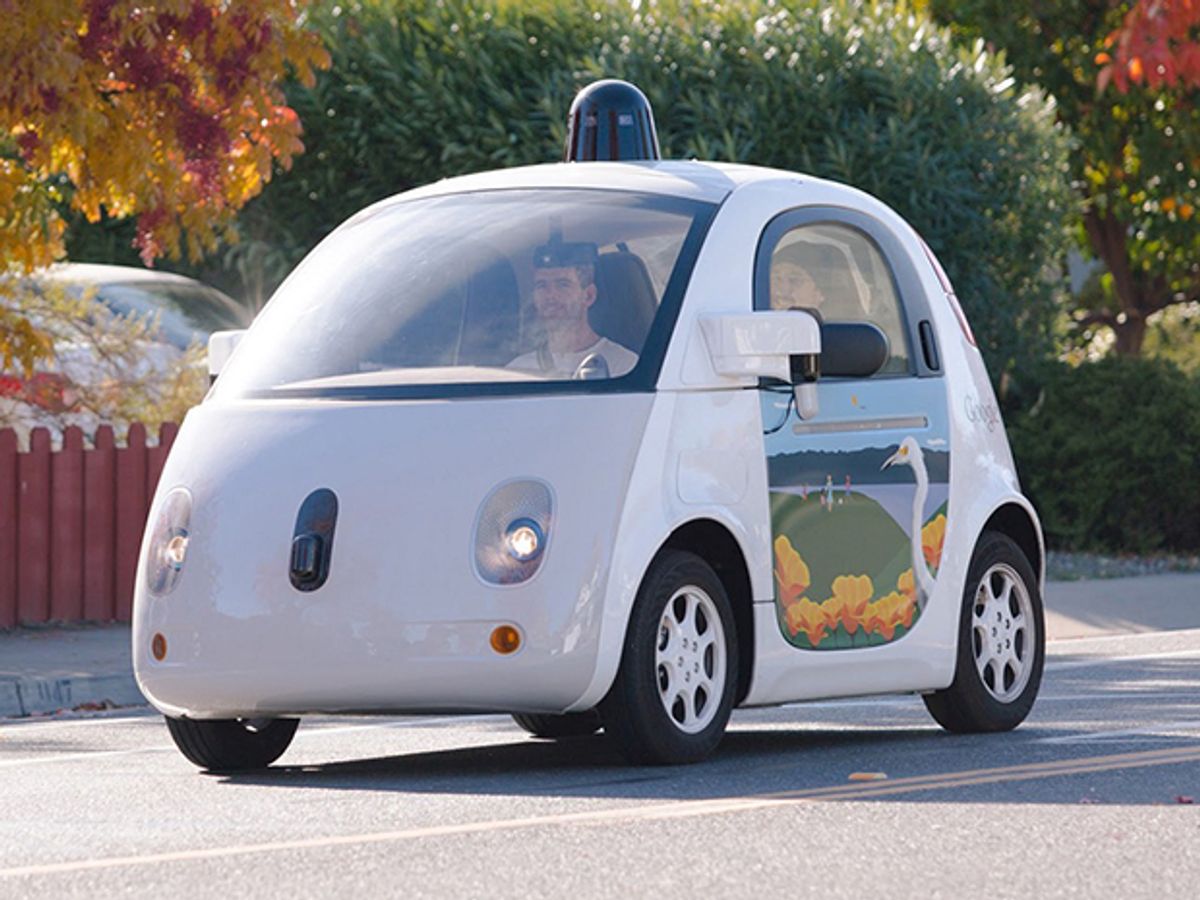Google has given some details on the near-miss experiences that its self-driving cars have had. Most, it turns out, were noted by the car's own software, but a few required that the driver jump in without warning.
Chris Urmson, head of the driverless car program of Google’s parent company, Alphabet, said yesterday in a statement that there had been 341 incidents over 14 months. In 272 incidents, the self-driving system knew that it had failed and immediately alerted the driver; the humans took an average of less than a second to take the wheel.
More serious were the 69 incidents in which the driver took control without prompting. When the company modeled those incidents on simulators, it determined that in 13 of them, the cars would have come into contact with someone or something—if only a traffic cone.
“What we find encouraging is that 8 of these incidents took place in ~53,000 miles in ~3 months of 2014, but only 5 of them took place in ~370,000 miles in 11 months of 2015,” Urmson’s statement said. “This trend looks good, and we expect the rate of these incidents to keep declining.”
Three of these 13 more serious cases were caused, the company says, by the reckless behavior of another driver, cyclist, or pedestrian.
In the company’s December report to the California Department of Motor Vehicles, all 341 incidents were categorized by their cause. Topping the list was sensor failure—such as mistaking overhanging branches for an obstacle—which accounted for about 35 percent of the mishaps.
Miscellaneous software problems—such as with the mapping service—accounted for 23 percent of the problems. Undesireable maneuvers, such as a close shave with a parked vehicle—accounted for 17 percent. Hardware problems—11 percent.
Weather caused only 4 percent of the problems. Then again, Google cars have so far driven mostly in balmy Mountain View, Calif., and Austin, Tex. That may change soon, as El Niño brings strange weather to California and as Google brings its experimental cars into new territories.
“Over the long view, we’d expect disengagements to be improving, but as we test in more challenging weather or driving situations, you could expect locally this to not look as good,” Urmson told The Guardian yesterday. “And it really isn’t representative of where the technology will be when we’re ready to release it.”
Philip E. Ross is a senior editor at IEEE Spectrum. His interests include transportation, energy storage, AI, and the economic aspects of technology. He has a master's degree in international affairs from Columbia University and another, in journalism, from the University of Michigan.



